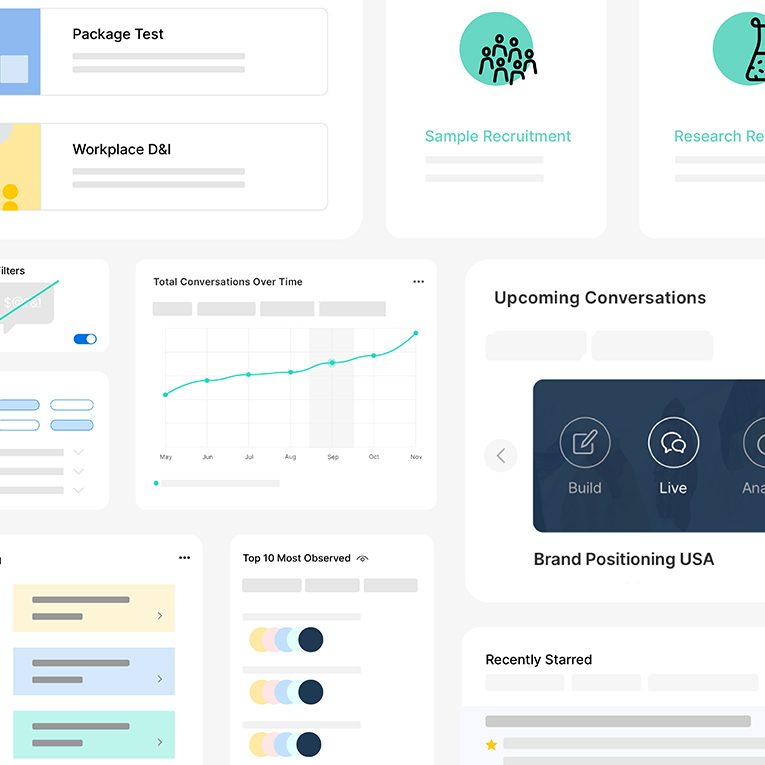.webp)
Trends
How to Calculate Your Sample Size Using a Sample Size Formula

.png)

.png)
Read More

.png)
.png)
.png)
Maria Noesi
November 25, 2021
.webp)
.webp)
.webp)
.webp)
.webp)
How to Gather Customer Feedback Through Email Marketing
Still wondering whether your latest product will take off? You might be two or three user reviews or customer feedback surveys away from finding out.

This is a contributor post. To write for Remesh, reach out to gabrielle.caton@remesh.org
Why Is Customer Feedback Important?
Still wondering whether your latest product will take off? You might be two or three user reviews from finding out.
Customer feedback plays a central role in a business—it provides a way to build lasting relationships with your customers, improve the experience of unhappy customers, innovate your product development or service according to customer needs, and help generate more revenue.
You can collect valuable information and feedback from your customers with creative email marketing.
Take customer feedback as an open door to more market opportunities and better ways to engage your customers. Use email marketing (and other unique ways of collecting user feedback) to lean in and know what they really think about your product and business - and tighten your product development roadmap.
Give Customers Insight Into Their Feedback
Before you begin, let your customer know why you need their feedback. It’s always best to begin a request with an introduction.
Maybe they just subscribed or made a purchase. Maybe you are exploring a new idea and want to know what they think. Maybe you implemented a few changes to some of your processes. When you let customers in on your business decisions and motivations, they will feel involved and your brand will become top-of-mind.
Be Specific By Zeroing In On Pain Points
Customers are likely to drop out of a survey if they realize that you are asking them too many questions about your product. Pare down your list to about three questions and customers will likely dedicate more time to answering in greater detail. Most of the time, a few open-ended questions trump several multiple-choice questions.
Many customers are also happy to receive emails with feedback boxes instead of a link to a separate website, which they think will take more of their time. Check out how Booking.com made feedback even simpler by letting its users choose one emoji that best describes their experience. Once customers click an emoji, they are given the choice to provide an in-depth review, where they can also interact with the service provider at will.

Source: Booking.com
Make Your Customers Feel Heard
Due to the bulk of emails that customers receive every day, it’s important for your business to stand out. Through personalized emails, your customers will notice that you took note of their name, location, and preferences, and are providing them with tailor-fit recommendations based on the information you collected.
Use their names, mention a little bit of their purchase history, and let them know what others in their community think of the same product. When your customers feel heard, they will be more willing to provide valuable feedback (and critical negative feedback with patience).
Check out how Rackspace wrote “a select group of cloud customers,” making the recipients feel privileged to be part of the group. A very personalized email like this needs to be followed up closely, as users will expect the business to deliver on its promises after receiving feedback.
Give your customers enough time to answer your custom survey or form, but also be sure to provide a deadline. When a loyal customer sees that you need their response within a specific timeframe, there will be less procrastination on their part and you will receive your feedback straight away.

Source: Rackspace
Prioritize Consumer Choice (and Improve Customer Satisfaction!)
You may be sending your request for feedback through an email, but some customers would rather post a review on Facebook or Google Maps. Customers are attracted to the idea of choice, so make sure that your email includes easily clickable icons to TripAdvisor, Twitter, Facebook, or Yelp. The more platforms you include, the more you will monitor, so be ready to respond to your customers wherever they leave a rating. Bonus points if you can provide superb customer service and guide them through the process.
Check out the example below from NPR.

Source: Really Good Emails
If you have customers who are not as involved with social media, you can also include the following options in your email:
- Face-to-face interviews
- Phone and SMS channels
- Customer support
Your customers should be able to provide you the feedback you need in the manner they choose, whenever they want. This way, they will understand that your business puts customer needs and preferences above all else.
Methods of Collecting Customer Feedback
Your customers’ opinions are definitely front and center, but if you want your feedback campaign to be successful, you should know the types of information you want to derive from your campaign.
Not all data is useful, and you wouldn’t want to repeatedly ask for certain feedback just because you forgot to include it the first time around. Well-collected information will make data assessments a breeze for you, your product team, and other team members. Be specific with your questions, but don’t forget that many customers also want to share what they think.
As an example, Taylor Stitch sends a shortlist of specific questions after a purchase, but the business also makes sure to include a text box where customers can freely write their feedback.

Source: Really Good Emails
Add Delight To Your Customer’s Experience
When your customers send feedback, they’re doing you a favor. Why not give them a little something in return? Many shops, just like the one below, offer product discounts in exchange for customer reviews. Some will ship real gifts, while others email back gift cards and vouchers. You can also use this opportunity to introduce a new product with a limited-time offer for a discount.

Source: Really Good Emails
Summing Up Customer Feedback
Despite the universal fear of criticism, many companies have come to love customer feedback and the benefits it brings. Your business will too if you take note of our guidelines and read up on how you can better leverage customer feedback.
Positive comments deliver that burst of optimism that will keep a business going, while negative reviews will push an owner to improve their craft even more. Thorough messages from new users are also quite exciting—they may have not been with a brand for very long, but they do adequately express how they are invested in what that organization does.
Loyal customers, the ones whom you have engaged for quite some time, are the most likely to go above and beyond with their feedback, providing you with fresh ideas and unique perspectives. Make sure they know you appreciate their thoughts.
Customer purchases may be a business’s end goal, but customer feedback will help improve your business, bring you repeat sales, generate more feedback, and keep this loop going. It’s the fuel that will help you run far.
Author Bio: Ash Salleh is the Director of SEO at Campaign Monitor, where he works closely with content, copy, and analytics teams to improve site-wide optimization. Prior to his time at Campaign Monitor, he also provided SEO and digital marketing expertise at Zappos and Axiata Digital.
More

Remesh Evolution: AI-Powered Insights Platform Unveils Major Updates to Satisfy Market Demand for High-Quality, Human-Centric Research

.png)

.png)
Read More

.png)
.png)
.png)

.png)

.png)
Learn More

.png)
.png)
.png)


Stay up-to date.
Stay ahead of the curve. Get it all. Or get what suits you. Our 101 material is great if you’re used to working with an agency. Are you a seasoned pro? Sign up to receive just our advanced materials.



